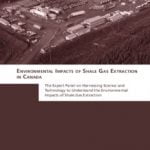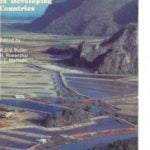Introduction to Environmental Control in the Petroleum Industry With the ascent of the environmental conservation movement, the petroleum industry has placed greater affirmation on minimizing the environmental impact of its operation. Improved environmental protection needs better education and training of industry personnel.

Introduction to Environmental Control in the Petroleum Industry
INTRODUCTION
The upstream petroleum industry, which includes all exploration and production processes, provides urgent petroleum outcomes that are used for transportation fuels, electrical power generation, space heating, medicine, and petrochemicals.
The proceedings of finding and producing petroleum, however, can impact the environment, and greatest impact arises from the release of wastes into the environment in concentrations that are not naturally found.
These wastes include hydrocarbons, solid contaminated with hydrocarbons, water contaminated with a diversity of dissolved and suspended solids, and a wide variety of chemicals.
While some of these wastes can have considerable adverse effects on the environment, some have little impact, and others are actually beneficial. The adverse impact can be minimized or eliminated through the implementation of proper waste management.
Origin of Wastes
Wastes are produced from the diversity of activities related to petroleum production. These wastes fall into general classes of produced water, drilling wastes, and associated wastes.
Produced water virtually always contains impurities, and if present in sufficient concentrations, these impurities can adversely impact the environment.
These impurities include dissolved solid (primarily salt and heavy metals), suspended and dissolved organic materials, formation solids, hydrogen sulfide, and carbon dioxide, and a deficiency of oxygen. Produced water may also contain a low level of naturally occurring radioactive materials.
Environmental Impact of Wastes
The primitive measure of the environmental impact of petroleum wastes is its toxicity to exposed organisms. The toxicity of a substance is most commonly reported as its concentration in water that results in the death of half of the exposed organism within a given length of time.
Exposure times for toxicity tests are typically 96 hours. The concentration that is lethal to half of the exposed population during the test is called ??50.
The high value of ??50 means that a high concentration of the substance is needed for lethal effects to be observed, and this indicates low toxicity.
Read Also: College & University Notes
Disclaimer:- Dev Library is not the owner of the books and neither does it create books. We just provide the links of the book for the rural and poor students who don’t afford to buy books. Those E-Books and Pdfs are already available on the internet. For any reason, if someone thinks that I’m violating any laws or if anyone has any issues regarding this, please feel free to Contact Us.

Hi, I’m Dev Kirtonia, Founder & CEO of Dev Library. A website that provides all SCERT, NCERT 3 to 12, and BA, B.com, B.Sc, and Computer Science with Post Graduate Notes & Suggestions, Novel, eBooks, Biography, Quotes, Study Materials, and more.









